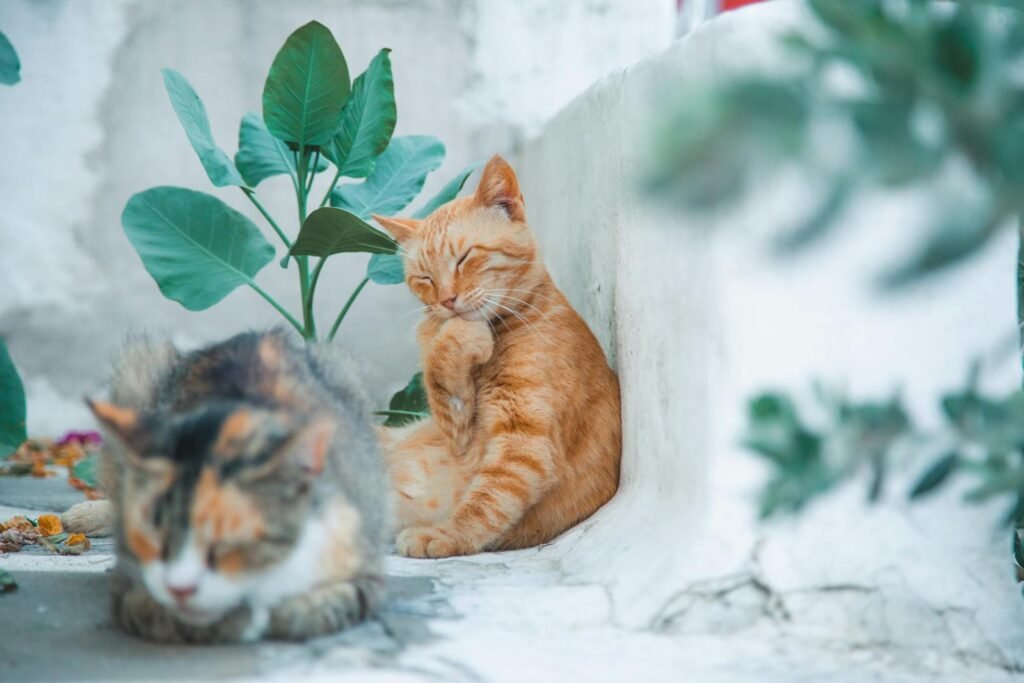For over a century, scientists have known that something unique lies behind the vibrant hue of orange tabby cats—but the exact cause remained elusive. Now, in a groundbreaking discovery, researchers at Stanford University have pinpointed the specific mutation that gives orange cats their signature color—and it turns out to be a genetic oddity found in no other mammal.
The Link Between Orang Fur and Cat Gender

While shades of orange appear in many mammals—from tigers and golden retrievers to orangutans and red-haired humans—the orange coloring in domestic cats is different. It’s strongly tied to sex, occurring far more often in males. This led scientists to suspect the mutation responsible must lie on the X chromosome.
“Males have only one X chromosome, so if they inherit the orange gene, they’ll be entirely orange,” explained Dr. Christopher Kaelin, a senior scientist in genetics and the study’s lead author. “But females need two copies—one on each X chromosome—to be fully orange.”
If a female cat inherits only one copy, she doesn’t turn fully orange—instead, she becomes a striking tortoiseshell or calico, with a mottled or patched mix of orange, black, and white. That’s due to a biological phenomenon known as random X inactivation, where only one X chromosome is active in each cell, creating a mosaic of colors.
The Science Behind Orange Cats Genetics

Despite scientists using domestic cats as genetic models for over 100 years, the precise mutation behind this orange coloring had never been fully identified—until now. Using newly available full cat genomes and DNA from spay and neuter clinics, researchers began eliminating possible gene variants.
After narrowing the search to a small section of the X chromosome, they discovered a key difference between orange and non-orange cats: a small deletion that boosts the activity of a neighboring gene called Arhgap36. This was surprising, as Arhgap36 had never been linked to pigmentation before—it was known mostly for its role in neuroendocrine tissues and some cancers.
“What’s wild is that Arhgap36 isn’t active in pigment cells of humans, mice, or even non-orange cats,” said Kaelin. “But in orange cats, it suddenly switches on in pigment cells where it’s not supposed to be.”
A Unique Mutation with Global Reach

This misexpression of Arhgap36 disrupts a key pigmentation pathway in a later stage than other orange-producing mutations seen in animals. That makes the mechanism entirely unique—an evolutionary twist seen only in domestic cats.
“This mutation likely arose early in the domestication process,” Kaelin said. “There are even 12th-century paintings that clearly show calico cats.”
While many have wondered if orange cats’ personalities—often described as playful or chaotic—are tied to their genes, researchers found no differences in gene expression outside pigment cells. In other words, the orange gene probably stops at the skin.
“There’s no strong evidence yet that it affects behavior,” Kaelin noted. “Most orange cats are male, so their personality quirks may just come down to gender rather than genetics.”
Still, the discovery sheds light on how evolution works at a molecular level—how a small mutation can give rise to an entirely new trait. And for fans of ginger cats, it’s further proof that there’s something extra special about their fiery feline companions.







